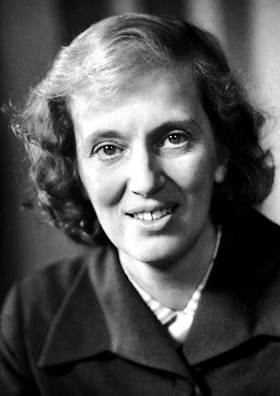
Crystallography is the experimental science of determining the arrangement of atoms in crystalline solids. Crystallography is a fundamental subject in the fields of materials science and solid-state physics. The word "crystallography" is derived from the Greek word κρύσταλλος (krystallos) "clear ice, rock-crystal", with its meaning extending to all solids with some degree of transparency, and γράφειν (graphein) "to write". In July 2012, the United Nations recognised the importance of the science of crystallography by proclaiming that 2014 would be the International Year of Crystallography.

X-ray crystallography is the experimental science determining the atomic and molecular structure of a crystal, in which the crystalline structure causes a beam of incident X-rays to diffract into many specific directions. By measuring the angles and intensities of these diffracted beams, a crystallographer can produce a three-dimensional picture of the density of electrons within the crystal. From this electron density, the mean positions of the atoms in the crystal can be determined, as well as their chemical bonds, their crystallographic disorder, and various other information.

Dorothy Mary Crowfoot Hodgkin was a Nobel Prize-winning British chemist who advanced the technique of X-ray crystallography to determine the structure of biomolecules, which became essential for structural biology.

The Cavendish Laboratory is the Department of Physics at the University of Cambridge, and is part of the School of Physical Sciences. The laboratory was opened in 1874 on the New Museums Site as a laboratory for experimental physics and is named after the British chemist and physicist Henry Cavendish. The laboratory has had a huge influence on research in the disciplines of physics and biology.

Sir William Lawrence Bragg, was an Australian-born British physicist and X-ray crystallographer, discoverer (1912) of Bragg's law of X-ray diffraction, which is basic for the determination of crystal structure. He was joint recipient of the Nobel Prize in Physics in 1915, "For their services in the analysis of crystal structure by means of X-rays"; an important step in the development of X-ray crystallography.

Gopalasamudram Narayanan Ramachandran, or G.N. Ramachandran, FRS was an Indian physicist who was known for his work that led to his creation of the Ramachandran plot for understanding peptide structure. He was the first to propose a triple-helical model for the structure of collagen. He subsequently went on to make other major contributions in biology and physics.
In physics, the phase problem is the problem of loss of information concerning the phase that can occur when making a physical measurement. The name comes from the field of X-ray crystallography, where the phase problem has to be solved for the determination of a structure from diffraction data. The phase problem is also met in the fields of imaging and signal processing. Various approaches of phase retrieval have been developed over the years.
Henry (Solomon) Lipson CBE FRS was a British physicist. He was Professor of Physics, Manchester Institute of Science and Technology, 1954–77, then professor emeritus.

Michael Mark Woolfson was a British physicist and planetary scientist. His research interests were in the fields of x-ray crystallography, biophysics, colour vision and the formation of stars and planets.

Richard Henderson is a British molecular biologist and biophysicist and pioneer in the field of electron microscopy of biological molecules. Henderson shared the Nobel Prize in Chemistry in 2017 with Jacques Dubochet and Joachim Frank.
William (Bill) Cochran was a Scottish physicist.

Crystallographic image processing (CIP) is traditionally understood as being a set of key steps in the determination of the atomic structure of crystalline matter from high-resolution electron microscopy (HREM) images obtained in a transmission electron microscope (TEM) that is run in the parallel illumination mode. The term was created in the research group of Sven Hovmöller at Stockholm University during the early 1980s and became rapidly a label for the "3D crystal structure from 2D transmission/projection images" approach. Since the late 1990s, analogous and complementary image processing techniques that are directed towards the achieving of goals with are either complementary or entirely beyond the scope of the original inception of CIP have been developed independently by members of the computational symmetry/geometry, scanning transmission electron microscopy, scanning probe microscopy communities, and applied crystallography communities.

George Guy Dodson FRS FMedSci, was a British biochemist who specialised in protein crystallography at the University of York.
Marion Amelia Spence Ross FRSE was a Scottish physicist noted for her work in x-ray crystallography and fluid dynamics.

Cecil Arnold Beevers was a British crystallographer, known for Beevers–Lipson strips, a computational aid for calculating Fourier transforms to determine the structure of crystals from crystallographic data, enabling the creation of models for complex molecules.

John Harry Robertson FRSC, FInstP was a British crystallographer whose work was important in the development of crystallographic techniques.

Barbara Wharton Low was a biochemist, biophysicist, and a researcher involved in discovering the structure of penicillin and the characteristics of other antibiotics. Her early work at Oxford University with Dorothy Hodgkin used X-ray crystallography to confirm the molecular structure of penicillin, which at the time was the largest molecule whose structure has been determined using that method. Later graduate work saw her study with Linus Pauling and Edwin Cohn before becoming a professor in her own right. Low's laboratory would accomplish the discovery of the pi helix, investigate the structure of insulin, and conduct research into neurotoxins.
This is a timeline of crystallography.
Leslie Leiserowitz is an Israeli chemist and crystallographer.













